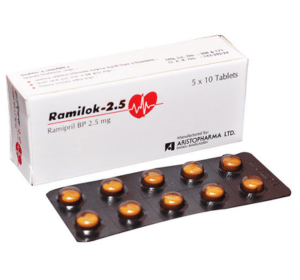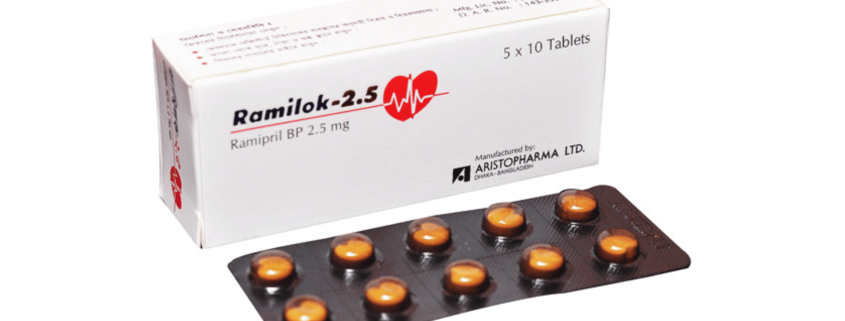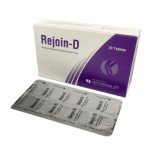Ramilok (Ramipril)

Therapeutic Group : Cardiovascular
Presentation:
Ramilok-2.5 Tablet: Each tablet contains Ramipril BP 2.5 mg.
Ramilok-5 Tablet: Each tablet contains Ramipril BP 5 mg.
Indications:
Ramipril is indicated in the following cases-
Mild to server hypertension where it may be used along or in combination with thiazide diuretic.
Congestive heart failure.
To reduce the resk of stroke, myocardial infarction and death from cardioascular events in patients with history of cardiovascular disease.
Proteinuric non-diabetic nephropathy.
Dosage & Administration:
Dosage of Ramipril must be adjusted according to the patient tolerance and response.
Hypertention: For the management of hypertension in adults not receiving a diuretic, the usal initial dose of Ramipril is 1.25-2.5 mg once daily. Dosage generally is adjusted no more rapidly than at 2-week intervals. The usual maintenance dosage in adults is 2.5 – 20 mg daily given as a single dose or in 2 divided doses daily. If BP is not controlled with Ramipril alone, a diuretic may be added.
Congestive heart failure after myocardial infarction: In this case, Ramipril therapy may be initiated as early as 2 days after myocardial infarction. An initial dose of 2.5 mg twice daily is recommended, but if hypotenstion occures, dose should be reduced to 1.25 mg twice daily. Therapy is then titrated to a target daily dose of 5 mg twice daily.
Prevention of major cardiovascular events: In this case, the recommended dose is 2.5 mg once daily for the first week of therapy and 5 mg once daily for the following 3 weeks; dosage then may be increased, as tolerated, to a maintenance dosage of 10 mg once daily.
Dosage in renal impairment: For the patients with hypertension and renal impairment, the recommended initial dose is 1.25 mg Ramipril once daily. Subsequent dosag should be titrated according to individual tolerance and BP response, up to a maximum of 5 mg daily. For the patients with heart failure and renal impairment, the recommended dose is 1.25 mg once daily. The dose may be increased to 1.25 mg twice daily and up to a maximum dose of 2.5 mg twice daily depending upon clinical response and tolerability.
Contrainidications:
Ramipril is contraindicated in patients who are hypersensitive to any component of this product and in paients with a history of angioedema related to previous of this product and in patients with a history of angioedema related to previous treatmnet with an ACE inhibitor.
Warning & Precautions:
Ramipril should be used with caution in patients with impaired renal function, hyperkalemia, hypotension, surgery/anesthesia and impaired hepatic function.
Side effects:
Ramipril is generally well tolerated. Dizziness, headache, fatigue and asthenia are commonly reported side effects. Other side effects occurring less frequently include symptomatic hypotension, cough, nausea, vomiting, diarrhea, rash, urticaria, oliguria, anxiety, amnesia etc, Angioneurotic edema, anaphylactic reactions and hyperkalemia have also been reported rarely.
Drug interaction:
Concomitant administration with diuretice may lead to serious hypotension and in addition dangerous hyprkalemia with potassium sparing diuretics. Concomitant therapy with lithium may increase the serum lithium concentration. Reduction in BP may affect the ability to drive and operate machinery and this may be exacerbated by alcohol. NSAIDs may reduce the antihypertensive effect of Remipril and cause deterioration of renal functiong.
Use in special groups:
Use in pregnancy:Pregnancy should be excluded before start of treatment with Ramipril and avoided during treatment. However, if pregnancy is detected, Ramipril should be discontinued as early as possible unless continued use in considered life saving.
Use in lactation: Ramipril should not be used during laction.
Packing:
Ramilok-2.5 Tablet: Each box contains 50’s tablets in blister pack.
Ramilok-5 Tabelt: Each box contains 30’s tablets in blister pack.



